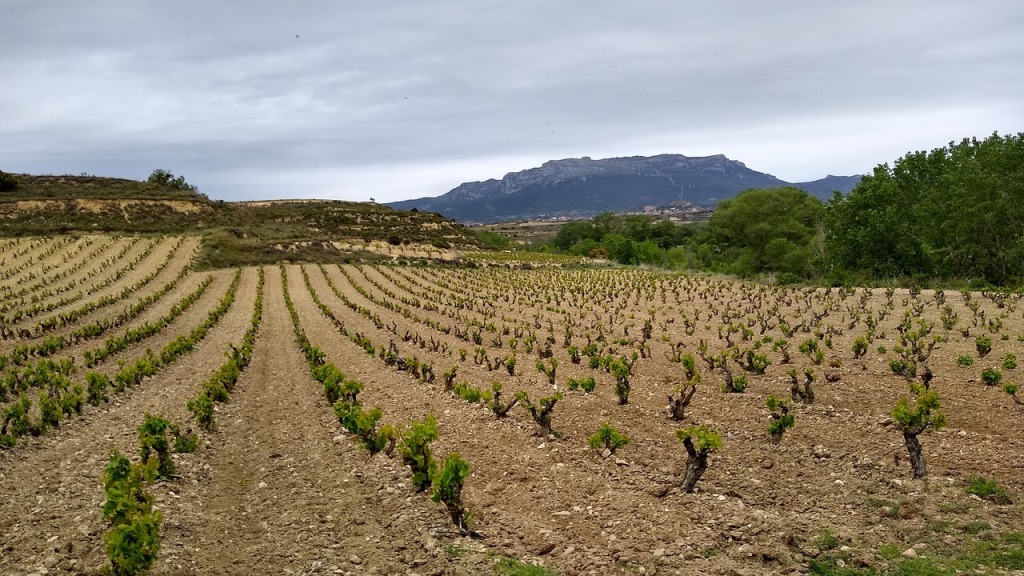
Many producers in Rioja have been making wine for centuries, but recently the traditional wine making methods have been challenged by a wave of ultra-modern bodegas that are introducing amazing new styles of wine.
An important factor is the geography of the area. Rioja stretches 75 miles from north-west to south-east resulting in a mix of soil types, topography and climates – all of which have an influence on the quality and style of the wines.

Photo courtesy of Christopher Winkler - Pixabay
Geography
Rioja is divided into three zones:
- Rioja Alta is located the higher part of the region over to the wes. It includes the historic winemaking town of Haro which is home to many of the best Bodegas including Muga, CVNE. The region contains the slopes of the Sierra Cantabria which are up to 800 metres. The cooler climate allows the grapes to ripen late but hold on to the lively acidity allowing the wines to age well.
- Rioja Alavesa lies over to the east in Basque country. It shares many of the characteristics of Alta and the towns of Laguardia and Elciego produce some of the region's best grapes. Alavesa's red wines are known for their purity of fruit and amazing scent.
- Rioja Oriental, as the name suggests, is in the eastern section and is further south. Because it is warmer garnacha flourishes.
The Grapes
Tempranillo is by far the most important grape and will be found at the heart of Rioja's best wines. It makes fruity, light wines and, with oak-ageing, becomes smooth, soft wines with a lovely perfume. Crianza will predominantly be tempranillo with a touch of Garnacha which adds body. Graciano is a Rioja speciality which adds aroma and acidity and Mazuelo (aka Carignan) gives tannin and colour.

photo courtesy of Pradillcarlos - Pixabay
The different winemaking styles of Rioja
Historically it was Bordeaux winemakers who introduced oak ageing to Rioja. Nowadays Rioja's wine styles are determined by maturation in oak - the type of oak and how long the wine spends in oak.
Traditional: delicate wines that are soft, silky and aromatic benefiting from long ageing in cask (usually American oak) and bottle. These are mostly ready to drink on release.
Modern-classical: these are younger, rounder wines that retain the classic character of Rioja through a mix of ageing in American and French oak. They have the structure to develop further in bottle.
Modern: in general these are wines with higher alcohol content, more body, and a strong presence of ripe fruit making them sweeter and powerful. They are usually aged aged for shorter time, usually in newer French oak. They tend to be released earlier and mostly need laying down before consumption.
Rioja Blanco: white Riojas nearly totally disappeared in the mid 2000's . Today they are making a welcome comeback. Viura, Malvasia and Garnacha blanca are the traditional grapes used to produce interesting blends. There are two main styles - fresh Rioja blanco - un-oaked, dry, lean and citrusy and aged Rioja blanco. These have spent some time in oak and have notes of vanilla, ripe pineapple with a salty finish.

photo courtesy of 12019 - Pixaby
Rioja wine law & age statements on labels
In 1926 Rioja was the first Spanish wine to obtain Denominación de Origen status when the first consejo regulador was established. While the regulations govern many aspects of wine production most importantly to wine drinkers are the rules specifying oak ageing:
Joven: wines that have had no oak ageing.
Crianza: wines must spend a minimum of one year in oak barrel and one in bottle before release.
Reserva: wines spend one year in oak barrel and two in bottle. Reserva wines are some of Rioja's finest.
Gran Reserva: wines are usually made in the best vintages where the fruit quality is rich enough to support two years in oak barrel and three in bottle.
These are minimum regulations and each house does its own thing. So it is worth trying a selection of different styles and producers to find your favourite.



